The afternoon was giving way as the train rolled into Thessaloniki. After a brief stay in Skopje, my time here was limited—a ticking clock I couldn’t ignore. With urgency, I gathered my essentials: most importantly, my phone charger and camera.
Thessaloniki’s call was simple: come and see. So I did. My route was direct from the station to where the city meets the sea. Sunsets, there are no whispers of beauty but full conversations. The sinking sun did not disappoint, drenching everything—the water, the boats, the buildings in a warm golden light.
The experience, though fleeting, left an impression. In those moments, Thessaloniki felt less like a place to visit and more like a moment to live within—even if just for an evening’s goodbye to the sun.
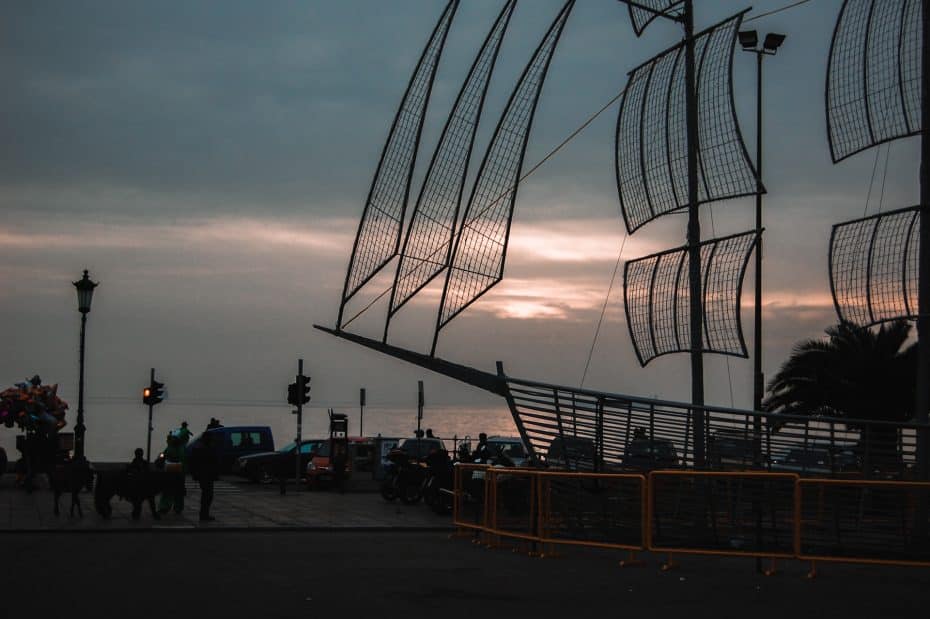
Unlike Athens and its Acropolis, Thessaloniki has rather little to offer visitors besides its urban liveliness, sunsets, and a few archaeological sites. However, the capital of the Greek region of Macedonia is a major transportation hub and acts as a crossroad midway between Athens, Istanbul, and Bulgaria, so it is quite unavoidable for all travelers who tour the region by land.
Apart from its waterfront location and peaceful, movie-like sunsets, Thessaloniki is also known for its luxury shops and upscale restaurants.
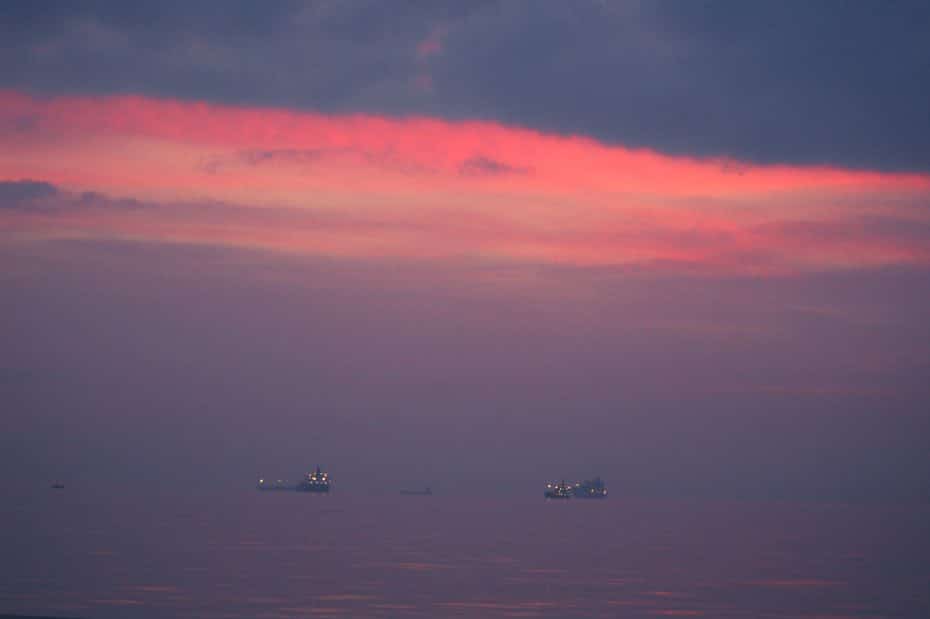
Since I arrived late, I checked into my accommodation, The Mandrino Hotel, so I could thoroughly explore the next morning. My train to Istanbul departed at midday so I knew I had to hurry.
After some breakfast at the hotel, I embarked on a quick exploration of the city center.
The main attraction in Thessaloniki is the White Tower, from which Sultan Mahmud II ordered the murder of the Janissaries (an elite branch of the Ottoman army that had gained vast amounts of wealth and power). With the fall of the Ottoman Empire, the Greeks whitewashed the tower in a symbolic effort to cover its dark history.
Currently, the tower is again bare-stone brown but retains the nickname of White Tower.
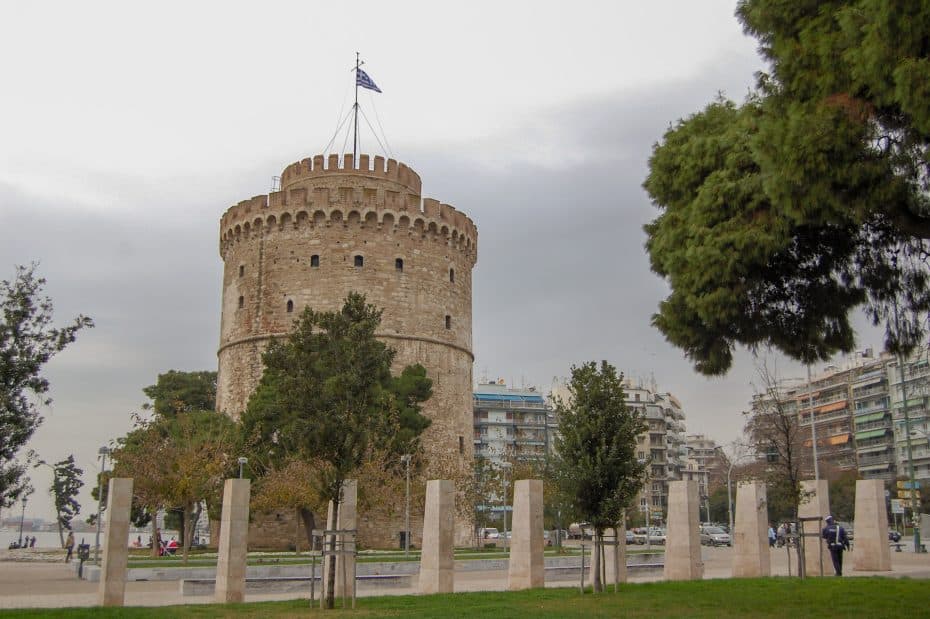
Nearby, the Arch of Galerius is part of an archeological site dating back to the 4th century, which includes a palace and mausoleum. The arch is decorated with reliefs of soldiers in battle and was erected in 303 to commemorate the victory of the Romans over the Persians.
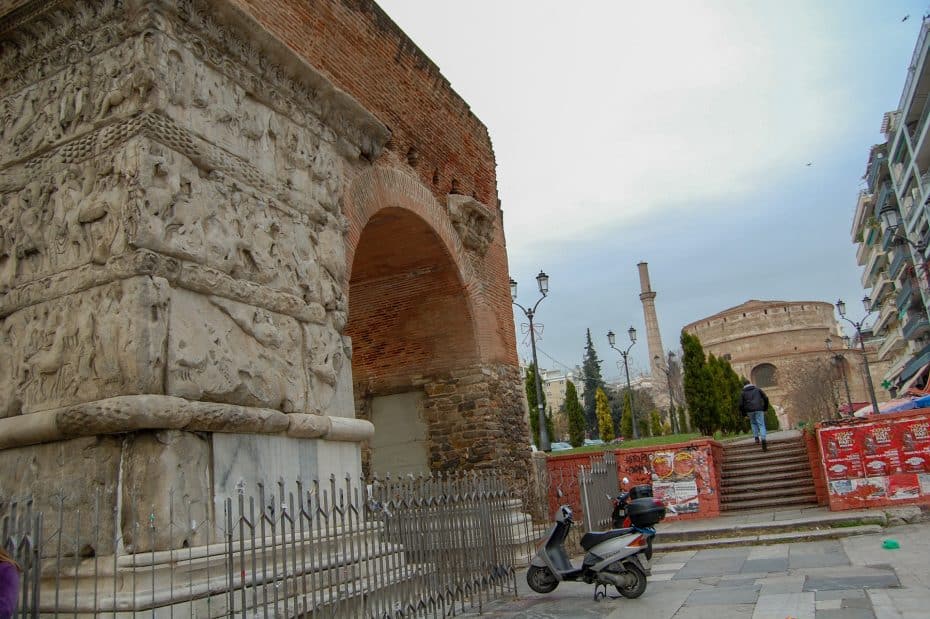
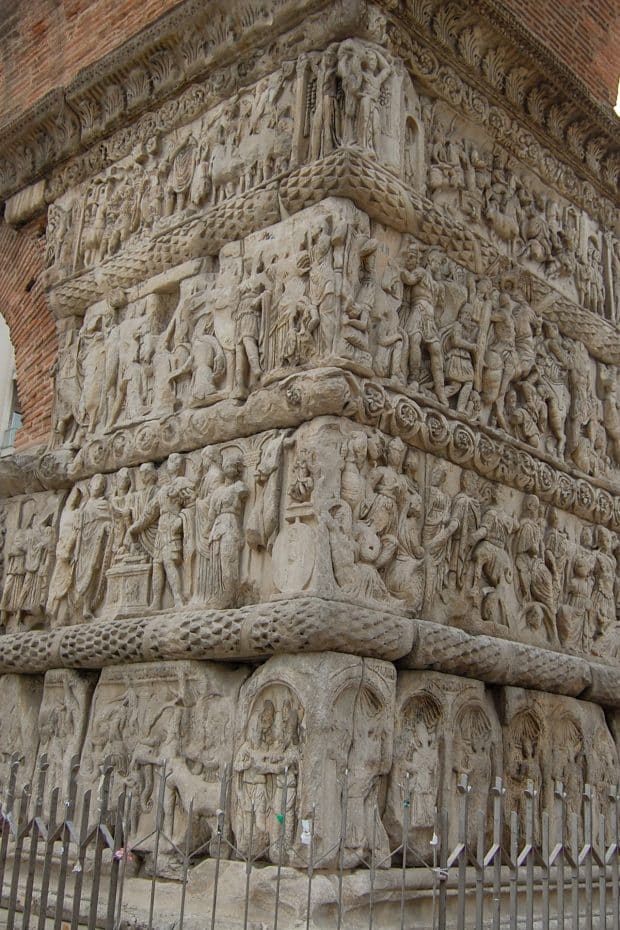
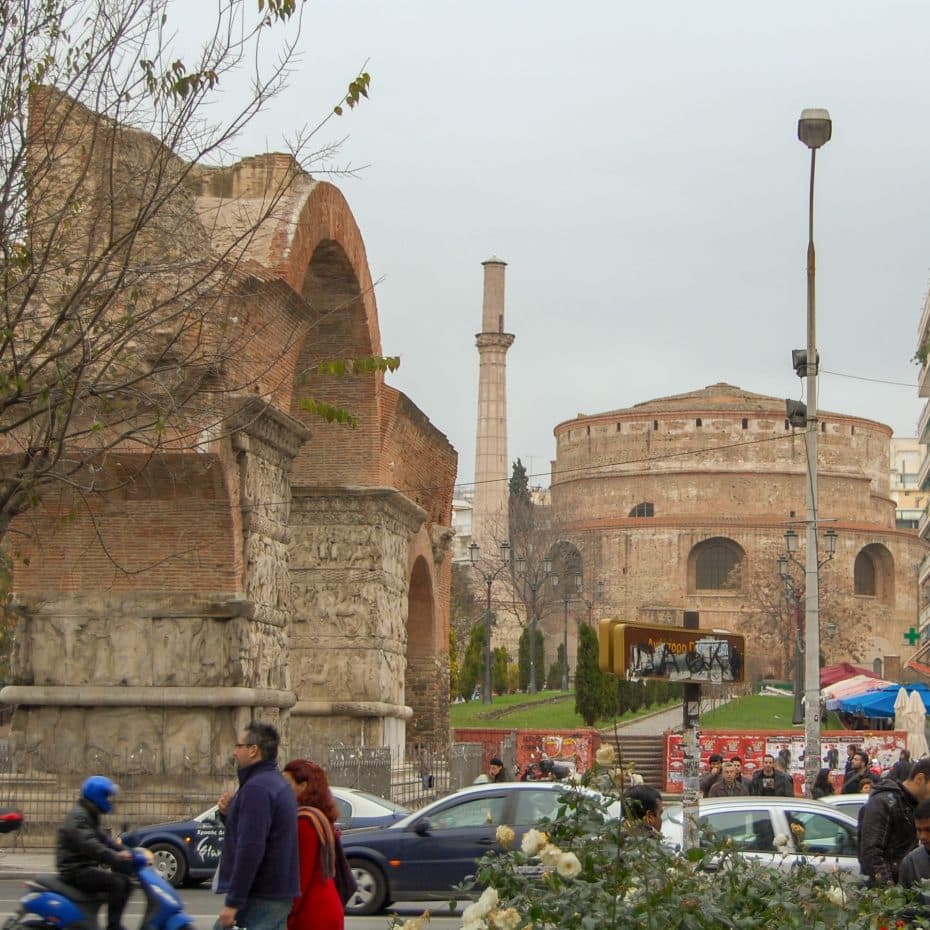
The Rotunda is hard to miss. This round structure (Rotunda literally translates as “rounded”), with walls over 6 meters thick, was built in the early 4th century. It was likely designed to be a mausoleum or a temple. Over many years, it has served different roles: from a church to a mosque and now as a museum. Inside, you’ll find mosaics that have survived from ancient times. The dome of the Rotunda is one of the largest surviving Roman cupolas.
Nearby, we find the Roman Forum of Thessaloniki. The city was an important hub in Roman times, buzzing with daily life and public events. The forum’s grand open area was defined by its two-story stoas—covered walkways—where people could shop, chat, and take shelter from the sun or rain. Court cases were heard in the nearby law courts, and crucial decisions affecting the city were made in this central spot. Excavations have unearthed shops and even a small amphitheater.
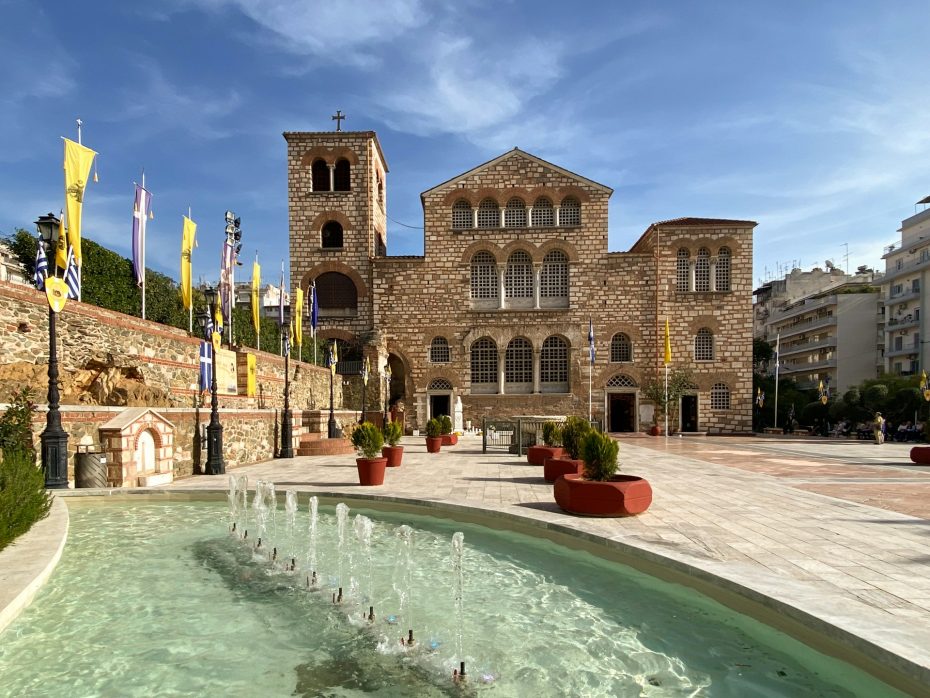
My next stop in this morning tour of Thessaloniki takes me to the Church of Agios Dimitrios, a remarkable structure dating back to the 7th century, around the time when historical records mention its dedication to Saint Demetrius, the city’s patron. Fires and earthquakes have damaged it over time. Inside, visitors find detailed mosaics and wall paintings that depict biblical scenes.
With the clock ticking, I make my way to the seaside promenade for a last stroll by the water. Known as Leof. Nikis, Thessaloniki’s seafront, is a scene of calm. People walk by at an easy pace, enjoying the breeze. The waves offer a soft background sound, perfect to soak in before I head to the train station for my train to Istanbul.
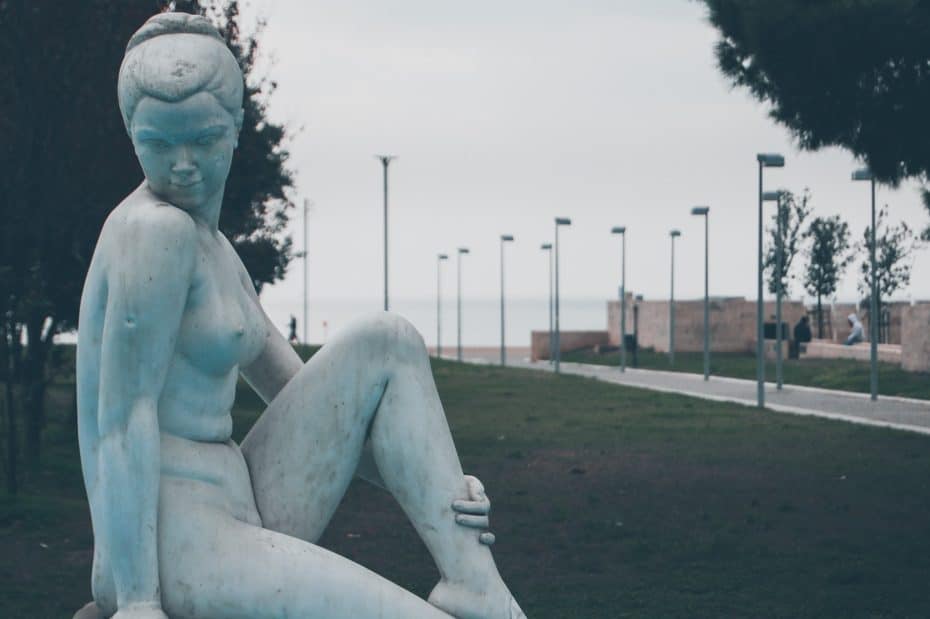
More Things to See in Thessaloniki
In the short time I was there, I quickly realized there’s a lot more to do in Thessaloniki. If your trip is longer, you’ll find many activities to fill your days. Walks by the sea, exploring markets, or enjoying local food are just a few options. Here are some extra things to see in Thessaloniki in a day or two:
- Aristotelous Square: This wide space is right in the city center. People often meet here, and it’s close to the sea.
- Atatürk Museum: In a small house, this museum shows where a famous Turkish leader was born. It’s filled with items from his life.
- Ano Poli (Old City): This part of town is high up and has small streets with old houses. The view of the sea from here is great.
- Heptapyrgion Fortress: These old walls once protected the city. It sits at the top and offers great views for visitors.
- Roman Forum (Ancient Agora): Old ruins from when Romans ruled, with areas where people gathered, shopped, and talked politics.
- Museum of Byzantine Culture: Learn about how people lived thousands of years ago in this area. There are art pieces and everyday items on display.
- Modiano Market: A busy indoor market where people buy food like meats, cheese, olives, and spices. It’s loud and lively.
- Olympiados Street: Known for its small shops selling delicious foods like pastries, breads, and sweets.
- Pasha Gardens: Once owned by a rich man, now public gardens where you can walk among plants and statues.
- Anatolia College: A beautiful school campus with lots of trees and historic buildings where students learn many subjects.
Visiting Thessaloniki: Useful Information
Getting to Thessaloniki

Thessaloniki, a city in Greece, lies in the north of the country. Traveling to Thessaloniki is practical through various means.
Thessaloniki by plane
Travelers can fly to Thessaloniki via the Thessaloniki Airport Makedonia, about 15 kilometers from the city center. The airport connects many European cities and offers car rentals and shuttle services. To reach the main station from the airport, you can use bus number 78.
Thessaloniki by train
Train access is available at the New Railway Station on Monastiriou Street. This station has routes to and from Athens and other major cities in Greece, as well as international services to Skopje and Sofia.
Thessaloniki by bus
The Macedonia Intercity Bus Station provides bus services to numerous Greek towns and regions. It is found on Giannitson Street, west of the city center.
Best Time to Visit Thessaloniki
The best time to visit Thessaloniki varies:
- In the summer, expect warm weather suitable for exploring the city’s waterfront and outdoor cafes.
- Fall offers cooler temperatures and fewer people.
- Winter is colder but with social festivities.
- Spring brings pleasant weather, perfect for sightseeing.
Where to Stay in Thessaloniki
The best area to stay in Thessaloniki is the city center, where you can be close to shops and historical sites.
Moving Around Thessaloniki
Options include buses, taxis, or renting a car for convenience when moving around Thessaloniki. Walking is also a pleasant way to discover many attractions close to each other in the city center.



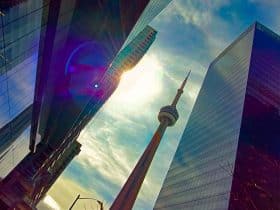
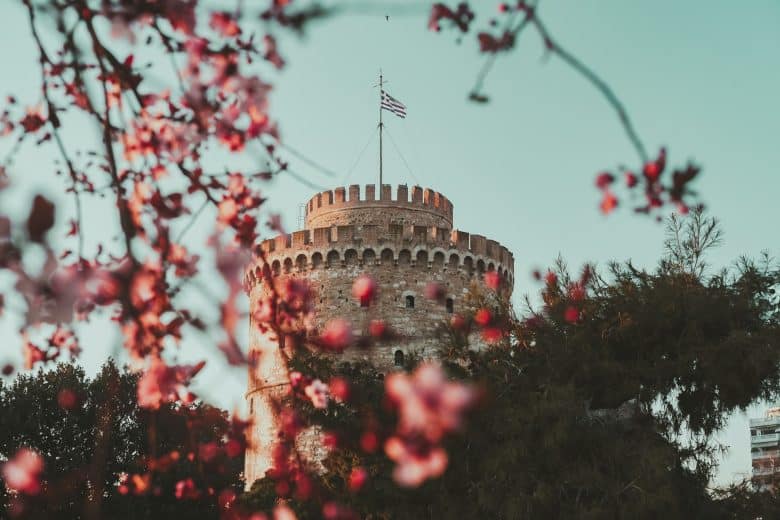



















Leave a Reply
View Comments